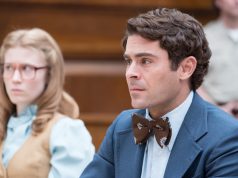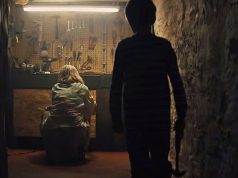From the first frame to the last, “The Cell” is a visually striking film, as gorgeous as it is grotesque, at times virtually unwatchable, yet impossible not to watch.
From director Tarsem Singh’s often mind-blowing camera angles and Paul Laufer’s scene-stealing cinematography, to Tom Foden’s imaginative production design, to Guy Dyas and Michael Manson’s art direction and April Napier’s costumes, to Robert Duffy and Paul Rubell’s quick-cut, snapshot-like editing, this is the first film this year in which the crew deserves more applause than the actors.
The film opens with child psychologist Catherine Deane (Jennifer Lopez) inside the mind of a comatose child. Advanced, experimental technology allows this, as long as both parties are wearing skin-tight, muscle-textured rubber suits and are suspended from strange laboratory wires in a top-secret facility.
The idea is that, while the boy cannot communicate in real life, perhaps Catherine can be enough of a counselor inside his head to bring him out of the coma.
Meanwhile, Los Angeles is plagued by a serial killer named Carl Stargher (Vincent D’Onofrio), who kidnaps women, keeps them alive in a glass prison cell for a few days, then drowns them and bleaches them to look like porcelain dolls. He’s already got a victim (Catherine Sutherland) in the cell when he collapses into a coma, moments before being captured by FBI agent Peter Novak (Vince Vaughn). No one except Carl knows where the soon-to-be victim is, and Carl’s in a coma. How to get the information from him and save the woman’s life?
Ah, thank goodness for that brain-visiting technology. It’s “Silence of the Lambs” gone futuristic as Catherine enters the mind of a serial killer, hopefully to gain his trust enough to learn where his secret hide-out is.
The scenes inside anyone’s head are fascinating, but especially in Carl’s. The editing, set designs and sound effects are every bit as eerie as you’d expect; the first sequence in there is truly frightening, as we realize that in this place, ANYTHING can happen. The fact that Catherine can get herself out of there by pressing a button on her hand is of little comfort as we confront the young, abused Carl and the adult, devilish monster he imagines himself to be. Make no mistake, Carl’s mind is a sick, twisted, often disturbing place.
Lopez and Vaughn are adequate in their roles, neither of which requires a lot. The film gives us cliches in revealing Peter’s backstory, which is both unnecessary and unnecessarily gross. Fortunately, they stop just short of saying he, too, was abused as a child, leaving it as an implication without going the stereotypical route of making this a “personal” case for him.
In fact, the film does a pretty good job of avoiding cliches all the way around, up until the finale, which has too much going on at once and doesn’t add up to much, and which has Vaughn’s character getting involved WAY too easily. But even when the film foreshadows, it does it in a fairly innocuous, natural way. Savvy film-goers might pick up on what’s being hinted at, but chances are you won’t think much about it.
D’Onofrio’s scenes as killer Carl and as the demonized overlord Carl are frightening and intense without being over-the-top — a tightrope walk that he and the director navigate very well.
The whole thing’s a tightrope walk, really, with much potential to be absolutely ridiculous, as well as the easy trap of becoming just another serial-killer movie. And it should not be overlooked that the mind-entering thing doesn’t always completely make sense. But the fact that it all comes off as credible anyway is a tribute to the people who made it look and feel so fantastically real and unreal.
B (; )





